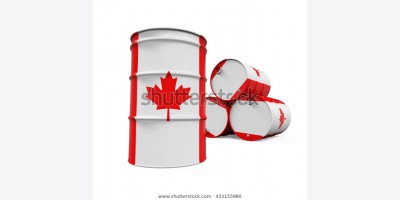By Platts
New York - April 2, 2014
U.S. commercial crude oil stocks fell a surprising 2.38 million barrels to 380.09 million barrels during the reporting week ended March 28, U.S. Energy Information Administration (EIA) data showed Wednesday.
Analysts surveyed Monday by Platts had been looking for a 1.8 million-barrel build.
A spike of 223,000 barrels per day (b/d) in crude oil runs at U.S. refineries likely ate into inventories. U.S. crude oil runs of 15.32 million b/d were the highest seen since the week ended January 24, when runs were 15.42 million b/d.
The runs boost helped U.S. refinery utilization rates increase 1.7 percentage points to 87.7% of capacity the week ended March 28. Analysts had been looking for a 0.3 percentage-point decline.
However, the closure of the Houston Ship Channel for a good portion of the week ended March 28 also likely was responsible for the surprise inventories draw. The channel closed due to a ship-barge collision that caused an oil spill.
U.S. Gulf Coast (USGC) stocks fell 1.34 million barrels to 198.98 million barrels during the week ended March 28 amid a 419,000 b/d drop in crude oil imports, which fell to 2.98 million b/d.
Imports from Mexico, many of which head to the USGC, were down 243,000 b/d to 774,000 b/d and imports from Iraq dropped 353,000 b/d to just 85,000 b/d. That said, imports from Saudi Arabia rebounded 340,000 b/d to 1.48 million b/d the week ended March 28. The previous week’s imports from Saudi Arabia of 1.14 million b/d were the lowest since the week ended November 1, when they were 793,000 b/d.
A boost in crude oil runs at USGC refineries also likely cut into USGC stocks. USGC runs rose 142,000 b/d to 8.05 million b/d, helping to boost refinery utilization rates by 1.7 percentage points to 89.7% of capacity -- the highest rate seen since the week ended January 10, when it was 91.7%.
Likely helping to boost rates, ExxonMobil's 365,000 b/d Beaumont, Texas, refinery resumed normal operations late the week ended March 28 following a fluid catalytic cracker upset.
U.S. Midwest crude oil stocks continued to drop the week ended March 28, falling a further 1.63 million barrels to 96.81 million barrels. This puts stocks just 0.33% above the EIA five-year average.
The region has seen inventories fall more than 11 million barrels since the week ended January 24. Likewise, stocks at Cushing, Oklahoma -- delivery point for the New York Mercantile Exchange (NYMEX) crude oil futures contract -- fell a further 1.22 million barrels to 27.25 million barrels. Cushing stocks are down a cumulative 14.6 million barrels over the same period.
Likely helping Midwest stocks' slide was a sharp rebound in crude oil runs. Midwest refineries boosted their runs by 219,000 b/d to 3.33 million b/d. This helped to push refinery utilization rates 5.8 percentage points higher to 88.4% of capacity. That said, rates are still well below the 95.1% of capacity seen in the week ended February 28.
U.S. Atlantic Coast (USAC) refinery utilization, however, fell 6.1 percentage points to 73.9% of capacity as runs fell 83,000 b/d to 952,000 b/d. Crude oil imports to the region fell 261,000 b/d to 538,000 b/d.
USAC GASOLINE STOCKS DROP
U.S. gasoline stocks fell 1.57 million barrels to 215.62 million barrels the week ended March 28, largely in line with analysts' expectations.
Stocks on the USAC -- home to the New York Harbor-delivered NYMEX RBOB contract -- fell 1.94 million barrels to 55.12 million barrels.
This puts USAC gasoline stocks more than 4.5% below the EIA five-year average. USAC stocks have fallen nearly 9.5 million barrels since the week ended January 31.
USAC gasoline and blending component imports eased, falling 54,000 b/d to 513,000 b/d during the week ended March 28. Imports to the region were 567,000 b/d the week ended March 21, the highest since late January. That said, USAC gasoline blending production rose 43,000 b/d to 2.87 million b/d.
Total U.S. gasoline blending and production rose 186,000 b/d to 9.53 million b/d, with the share of that increase spread across much of the country. Implied demand* for gasoline fell sharply, slipping 289,000 b/d to 8.71 million b/d. However, a four-week moving average shows gasoline demand has been relatively steady, rising just 75,000 b/d week over week to 8.79 million b/d.
U.S. distillate stocks rose 554,000 barrels to 112.96 million barrels the week ended March 28, counter to analysts’ expectations. Analysts had been looking for a 900,000-barrel draw.
USGC distillate stocks rose 1.73 million barrels to 37.56 million barrels during the week ended March 28. The rise could have been aided by the closure of the Houston Ship Channel, which likely impacted the region's ability to export refined products.
USGC ultra-low sulfur diesel production was little changed, rising just 10,000 b/d to 2.41 million b/d.























